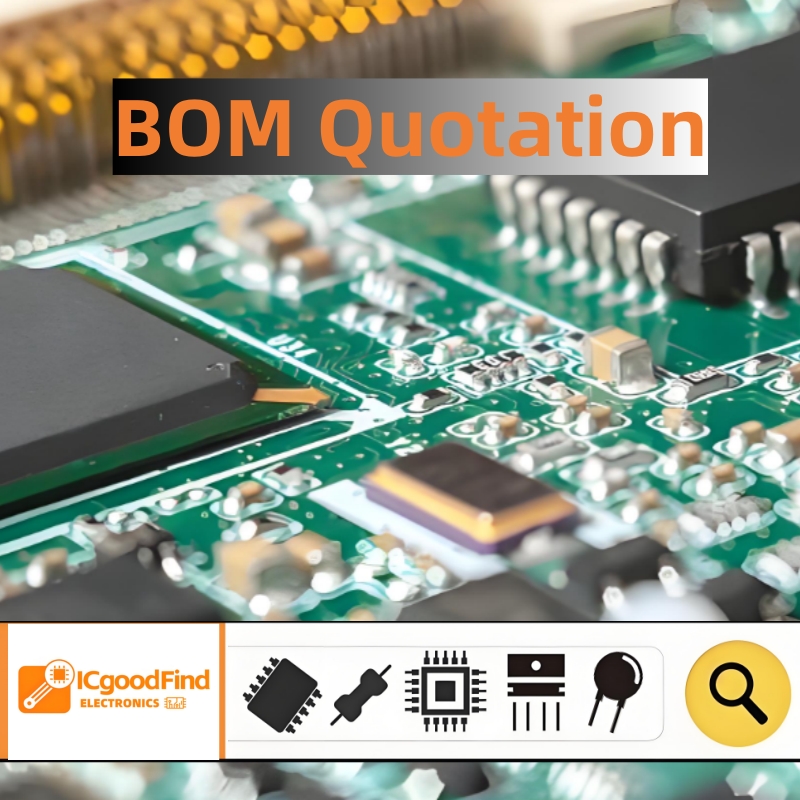**AD7416ARM: A Comprehensive Guide to the 10-Bit Digital Temperature Sensor**
The **AD7416ARM** from Analog Devices is a highly integrated, low-power, **10-bit digital temperature sensor** that provides precise temperature measurements and monitoring for a wide array of applications. Housed in a compact MSOP-8 package, this device combines a temperature sensor, a 10-bit analog-to-digital converter (ADC), and versatile control logic on a single chip, making it an ideal solution for system thermal management.
**Key Features and Architecture**
At the heart of the AD7416ARM is a **bandgap temperature sensor** core. This sensor generates a voltage that is precisely proportional to the absolute temperature of its environment. This voltage is then digitized by the on-chip, successive approximation register (SAR) ADC. The **10-bit resolution** provides a temperature measurement granularity of 0.25°C per Least Significant Bit (LSB), allowing for accurate monitoring with a typical accuracy of ±2°C from -40°C to +125°C.
A defining feature of the AD7416ARM is its simple **2-wire I²C-compatible serial interface**. This allows a microcontroller or processor to read temperature data and configure the sensor using just two bus lines (SDA and SCL), significantly reducing wiring complexity and saving valuable GPIO pins on the host controller.
Beyond simple temperature reading, the chip includes an **on-chip temperature value register** that stores the result of the most recent conversion. More importantly, it features a **dedicated overtemperature indicator**. Users can program an upper limit (T_OTI) into a register via the I²C interface. The sensor continuously compares the measured temperature against this limit. The ALERT pin asserts (low) when the measured temperature exceeds T_OTI, providing a critical, immediate hardware interrupt without requiring the host to constantly poll the sensor. This function is crucial for implementing fast-response thermal shutdown or cooling fan control systems.
The device operates from a **single 2.7 V to 5.5 V supply**, consuming very low power, typically 350 µW during normal operation. It also offers a programmable shutdown mode, reducing power consumption to just a few microwatts when measurements are not required continuously, which is essential for battery-powered devices.
**Typical Applications**
The AD7416ARM is designed for **system thermal management and protection** in numerous electronic systems. Common applications include:
* **Computer Systems:** Monitoring processor (CPU), GPU, and motherboard temperatures.
* **Office Equipment:** Thermal oversight in printers, copiers, and fax machines.

* **Industrial Control Systems:** Ensuring critical controllers and PLCs operate within safe temperature ranges.
* **Battery-Powered Devices:** Monitoring temperature in portable electronics to prevent overheating and ensure battery safety.
* **HVAC and Environmental Monitoring Systems.**
**How to Use the AD7416ARM**
Interfacing the AD7416ARM with a microcontroller is straightforward:
1. **Hardware Connection:** Connect the VDD and GND pins to a suitable power supply (2.7V-5.5V). Pull up the SDA, SCL, and ALERT lines to VDD using appropriate resistors (typically 4.7 kΩ). Connect these to the corresponding I²C pins on the host microcontroller.
2. **Software Configuration:** The host controller initiates communication via the I²C bus using the device's unique address. The user can then:
* **Read Temperature:** Read the value from the temperature value register and convert the 10-bit digital code to Celsius.
* **Set Limits:** Write the desired overtemperature trip point (T_OTI) to the configuration register.
* **Configure Behavior:** Set other parameters, such as the fault queue (number of overtemperature events needed before alert triggers) to prevent false alarms.
3. **Interrupt Handling:** The host can either poll the temperature value regularly or set up an interrupt service routine (ISR) triggered by the ALERT pin, enabling immediate action upon an overtemperature event.
**ICGOODFIND:** The AD7416ARM stands out as an exceptionally easy-to-use and efficient solution for digital temperature sensing. Its integration of the sensor, ADC, alert function, and serial interface into a tiny form factor **significantly reduces design complexity and board space**. The **overtemperature interrupt feature provides robust system protection**, while its low power consumption makes it suitable for portable applications. For designers needing reliable, precise, and simple thermal monitoring, the AD7416ARM remains a compelling choice.
**Keywords:** Digital Temperature Sensor, I²C Interface, Overtemperature Alert, Thermal Management, Low-Power
